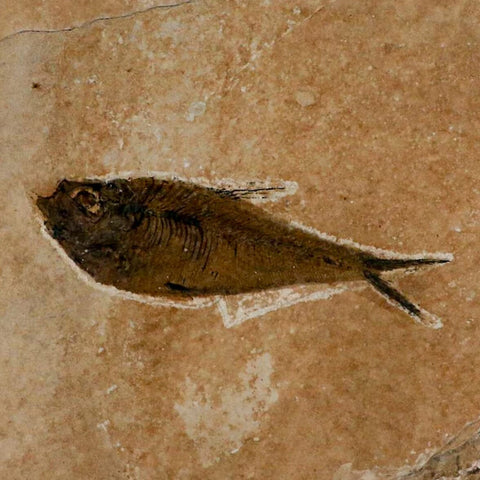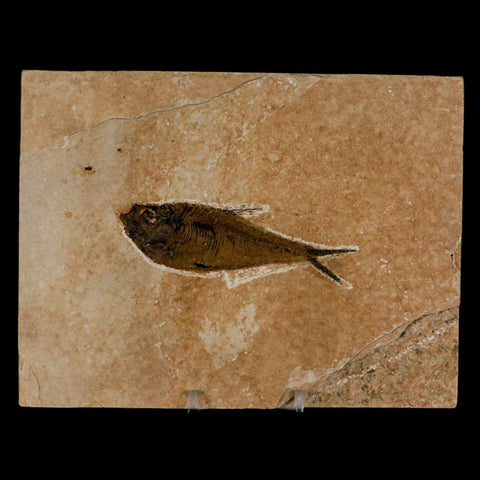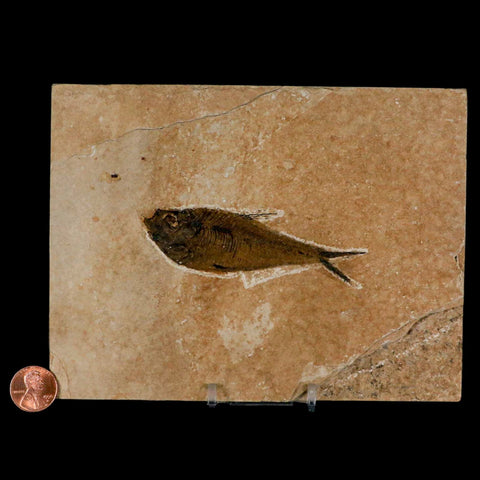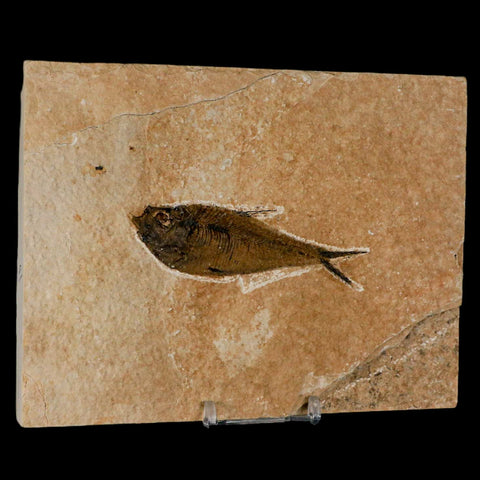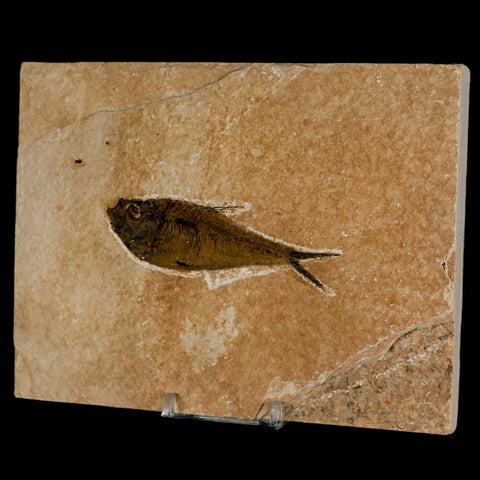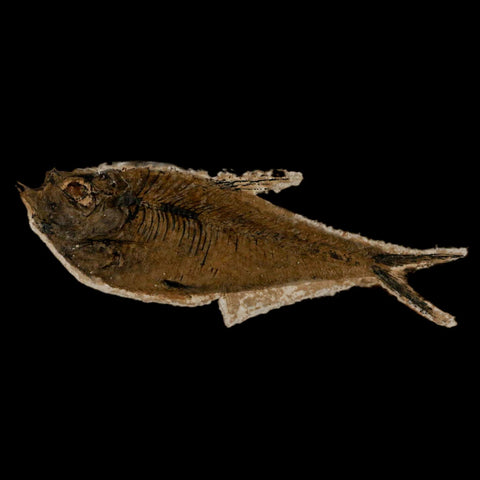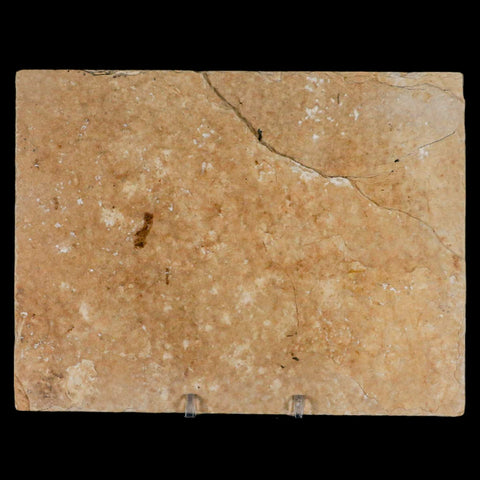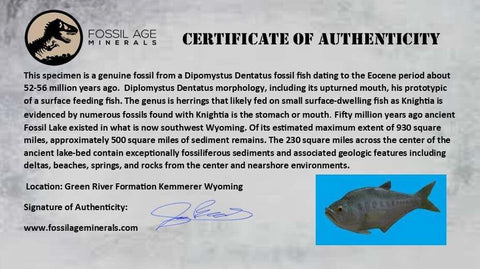3.5" Diplomystus Dentatus Fossil Fish Green River FM WY Eocene Age COA, Stand
Location: Kemmerer, Wyoming
Weight: 1 Pound 10.5 Ounces
Dimensions: 6.5 Inches Long, 5 Inches Wide, 0.7 Inches Thick (Plate)
Fish Dimensions: 3.5 Inches Long, 1.1 Inches Wide
Comes with a Free Stand.
Comes with a Certificate of Authenticity.
The item pictured is the one you will receive.
This is a genuine fossil.
56 million years old, Eocene age.
Diplomystus Dentatus morphology, including its upturned mouth, is typical of a surface-feeding fish. The genus is herrings that likely fed on small surface-dwelling fish, as Knightia is evidenced by numerous fossils found with Knightia in the stomach or mouth.
Half a century of millions of years ago, a vast prehistoric Fossil Lake spread across what is today southwest Wyoming. Though it once reached an impressive 930 square miles, about 500 square miles of its sediment have survived the test of time. Right at the heart of this ancient lake bed lies 230 square miles packed with extraordinary fossil-rich sediments and striking geologic features—from deltas and beaches to springs and rocks—capturing the wild essence of both central and nearshore habitats.
The unusual chemistry of the fossil lake prevented decay and scavenging of dead organisms while millimeter-thick layers of alternating limestone matter slowly accumulated. The result is laminated limestones that contain the highest concentration of fossil fish in the world. These fish, other aquatic organisms, and associated geologic features make Fossil Lake the world's best Paleogene record of the freshwater lake ecosystem.
Since their initial discovery in the 1870s, numerous flawlessly preserved fossil fish have been found. Along with these fish, the laminated limestone contains a complete aquatic ecosystem, including cyanobacteria, plants, insects, crustaceans such as shrimp, crawfish, and ostracods, amphibians like frogs and primitive salamanders, as well as alligators, turtles, birds, and mammals, including the oldest known pantolestid, an otter-like mammal. The surrounding subtropical terrestrial environment is also represented by rare fossils like horses, two snake species, lizards, two types of bats, birds, an apatemyid (a tree-dwelling insectivore), a minced (primitive carnivore), insects, and over 325 varieties of leaves, seeds, and flowers.

Please be aware of the nature of fossils:
Being buried under the ground for millions of years under tons of pressure tends to be rough. No fossil comes out of the ground whole and perfect. Most fossils have undergone some restoration, while others are altered by man, simply to enhance their presentation in different ways. These are part of the natural beauty of the fossil and are not considered defects.


